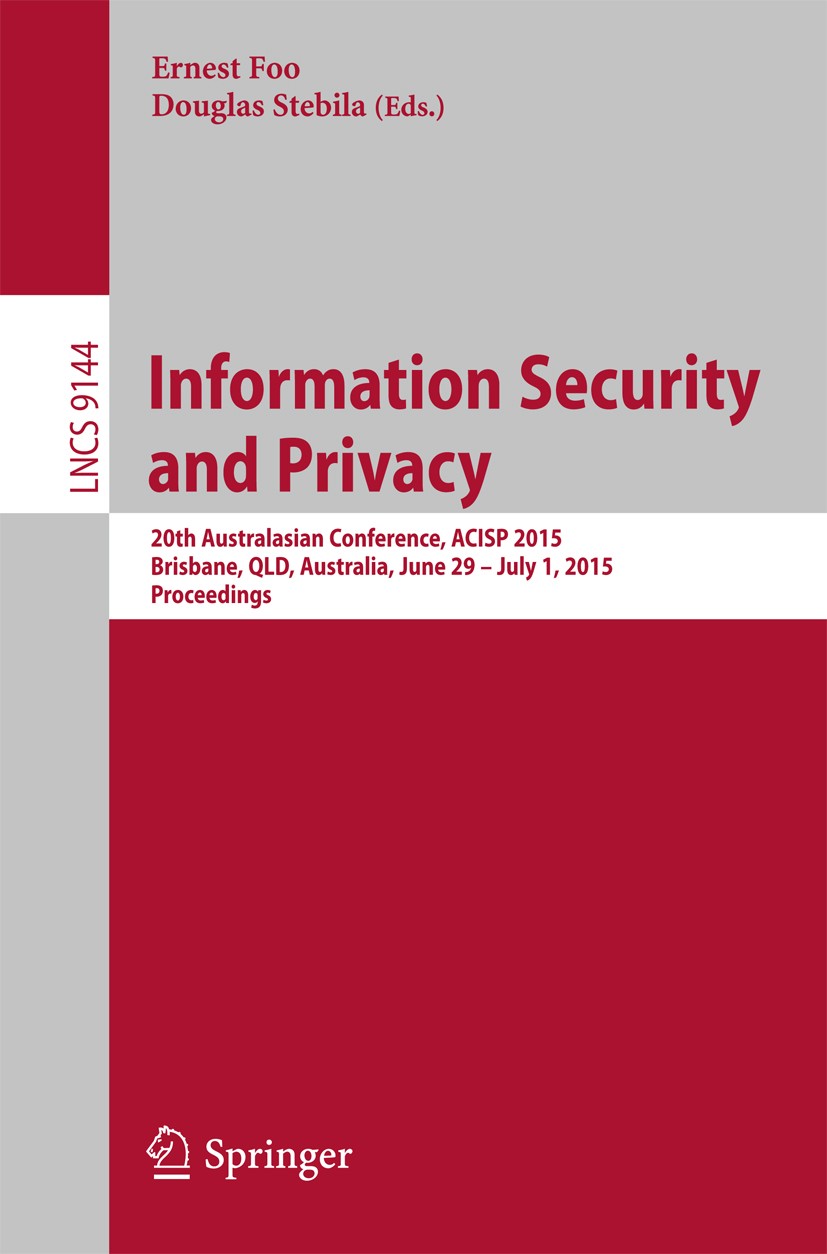| 书目名称 | Information Security and Privacy |
| 副标题 | 20th Australasian Co |
| 编辑 | Ernest Foo,Douglas Stebila |
| 视频video | http://file.papertrans.cn/466/465409/465409.mp4 |
| 丛书名称 | Lecture Notes in Computer Science |
| 图书封面 |  |
| 描述 | .This book constitutes the refereed conference proceedings of the 20th Australasian Conference on Information Security and Privacy, ACISP 2015, held in Brisbane, QLD, Australia, in June/July 2015..The 28 revised full papers presented in this volume were carefully revised and selected from 112 submissions. The papers are organized in topical sections on symmetric cryptanalysis; public key cryptography; identity-based encryption; digital signatures; security protocols; privacy protocols; symmetric constructions; homomorphic encryption and obfuscation.. |
| 出版日期 | Conference proceedings 2015 |
| 关键词 | Cloud storage; Cryptanalysis; Cryptographic module; Cryptographic protocols; Cryptography; Data integrity |
| 版次 | 1 |
| doi | https://doi.org/10.1007/978-3-319-19962-7 |
| isbn_softcover | 978-3-319-19961-0 |
| isbn_ebook | 978-3-319-19962-7Series ISSN 0302-9743 Series E-ISSN 1611-3349 |
| issn_series | 0302-9743 |
| copyright | Springer International Publishing Switzerland 2015 |
 |Archiver|手机版|小黑屋|
派博传思国际
( 京公网安备110108008328)
GMT+8, 2025-11-21 05:02
|Archiver|手机版|小黑屋|
派博传思国际
( 京公网安备110108008328)
GMT+8, 2025-11-21 05:02


